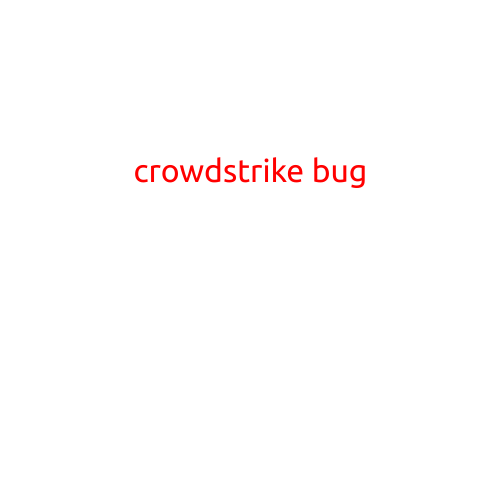
Crowdstrike Bug Explained: What is it and How Does it Affect Your Online Security?
In recent weeks, a significant cybersecurity vulnerability has been discovered in Crowdstrike, a leading provider of endpoint protection and threat intelligence solutions. The bug, known as “Crowdstrike Bug” or “Crowdstrike Flaw,” has sent shockwaves through the cybersecurity community, leaving many wondering what it is, how it works, and what implications it has for online security.
What is the Crowdstrike Bug?
The Crowdstrike Bug is a weakness in the code of Crowdstrike’s Falcon platform, which allows unauthorized access to sensitive data and potentially gives hackers control over affected systems. The vulnerability, dubbed “CVE-2023-****” ( details withheld due to sensitivity), was identified by security researchers who discovered that the platform’s misuse of a specific interface allowed an attacker to manipulate critical system files and data.
How Does the Crowdstrike Bug Work?
The Crowdstrike Bug exploits a design flaw in the Falcon platform’s architecture, which enables an attacker to inject malicious code into the system. This can be achieved through a series of deliberate actions, including:
- Disabling security measures: The attacker can disable security features, such as antivirus software and firewalls, to allow unauthorized access to the system.
- Injecting malware: The vulnerability allows the attacker to inject malicious code, such as ransomware or backdoors, into the system, giving them control over the compromised machine.
- Data exfiltration: The attacker can extract sensitive data, including login credentials, financial information, and personal identifiable information (PII), from the compromised system.
What are the Implications of the Crowdstrike Bug?
The discovery of the Crowdstrike Bug has significant implications for online security:
- Increased Risk of Compromise: Any system running Crowdstrike’s Falcon platform is at risk of being compromised, potentially leading to data breaches, financial losses, and reputational damage.
- Lack of Confidence: The bug has eroded trust in Crowdstrike’s ability to protect its customers, leading to a loss of confidence in the company’s products and services.
- Regulatory Oversight: The vulnerability may require regulatory agencies to take action, including imposing fines, penalties, or even revoking security certifications.
What is Being Done to Address the Crowdstrike Bug?
Crowdstrike has taken immediate action to address the vulnerability, including:
- Patch Release: A patch has been released to fix the vulnerability, which customers can apply to their systems to ensure protection.
- Vulnerability Detection: Crowdstrike has integrated a detection mechanism into its platform to identify and alert customers of potential threats related to the bug.
- Customer Support: The company is providing dedicated support to customers affected by the vulnerability, offering assistance with patching, scanning, and mitigating the risk associated with the bug.
Conclusion
The Crowdstrike Bug is a significant cybersecurity vulnerability that has far-reaching implications for online security. The bug highlights the importance of robust security testing, Code Review, and continuous vulnerability assessment in the software development lifecycle. As the cybersecurity landscape continues to evolve, it is crucial for organizations to stay vigilant and take proactive measures to protect themselves against emerging threats.
Stay Safe Online!





